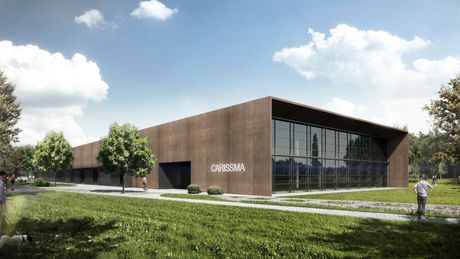German test centre taking the lead in vehicle safety

What if your car could communicate with other vehicles on the road to avoid a collision?
That’s one area of study that a groundbreaking test centre for research and development in vehicle safety, the largest of its kind in Europe, will look into at the Ingolstadt University in Germany.
CARISSMA (Center of Automotive Research on Integrated Safety Systems and Measurement Area) is a €28m publicly funded project wholly focused on integrated safety - meaning not only will airbags, auto body and active safety systems be studied but also the overall concept of all automotive safety-related topics, at one central location.
The centre plans to conduct trials of testing methods for Car2X communication, a growing field of research in vehicle safety where vehicles communicate with one another or other objects and exchange information, for example, to avoid accidents.
“When it comes to vehicle testing at a university, the completed system will raise the bar around the globe. The focus in Ingolstadt is clearly moving toward a combination of classic vehicle testing with tests of active safety systems and topics such as Car2X communication,” said Wolfgang Rohleder, manager of sales and applications at MESSRING.
The contract for the crash-test facility was awarded to the manufacturer MESSRING, which will work on the structural integration of the facility and equip the university with state-of-the-art system engineering technology.
“We have often planned research projects or systems with universities in the past. But as far as scope and project size goes, CARISSMA outshines all of them,” said Rohleder.
The 4000 m2 centre will house laboratories and testing areas complete with more than 50 scientists and engineers.
The 74 m sled-test facility will be equipped with MESSRING’s MicroTrack system, an electric propulsion system designed specifically for use in crash tests. Powered by an electric motor (rating of 400 kW), the system can propel vehicles weighing up to 3.5 tonnes into an impact block at a speed of 65 km/h.
“Our main goal is to make the centre the most state-of-the-art and innovative location for scientific transportation and vehicle research,” said Igor Doric, the scientific and technical head of the project.
CARISSMA is scheduled to be fully operational in January 2016.
Victoria's new psychological injury obligations now in effect
New obligations have come into effect for workplaces across Victoria to protect employees from...
Survey results show fall in national return to work rate
Safe Work Australia's 2025 National Return to Work (NRTW) Survey results have been released,...
National policy approach for workers comp and the gig economy published
Safe Work Australia has published a national policy approach for workers compensation and the gig...








